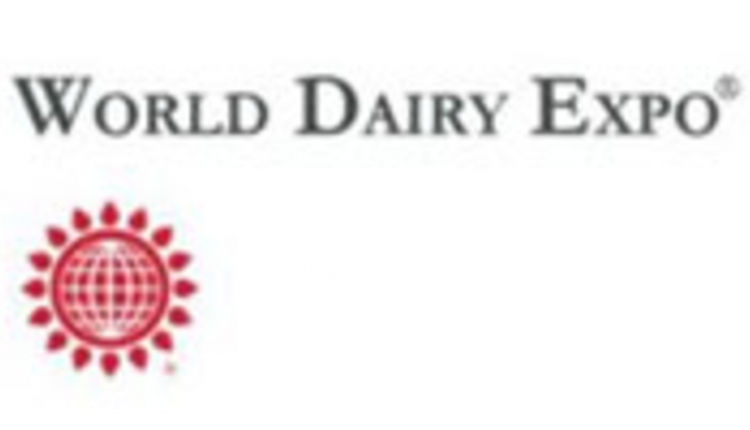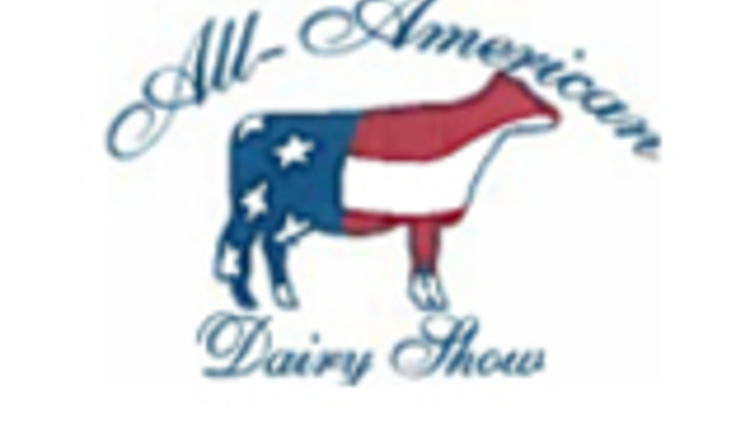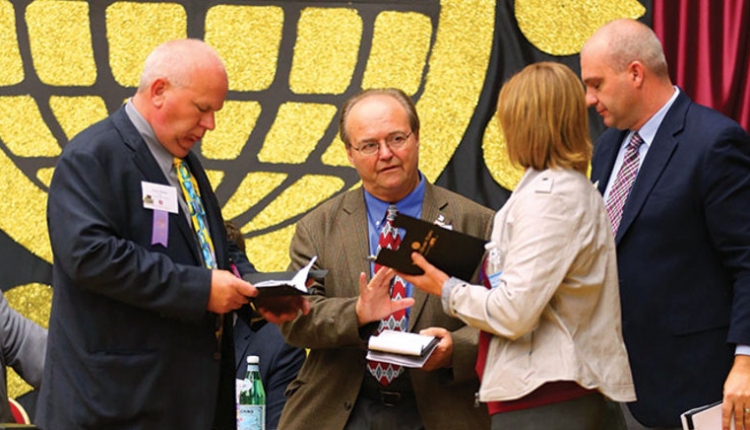The author is a dairy and agricultural writer based in Columbus, Ohio.

If dairy cows are your thing, World Dairy Expo is a cornucopia for the senses. The sight of the Coliseum, the smell of beet pulp and wash racks, the taste of gooey grilled cheese sandwiches, and the feel of brisk autumn air conjure memories of Expos gone by.
At the center of it all is the crown jewel — the showring, adorned with decorations that befit a new theme each year and a bed of colored shavings on which to present the world’s most beautiful animals. The ring surface is so iconic that the term “colored shavings” is an alias for Expo itself, and showing on the colored shavings is a lifelong dream for many.
The color of these wood shavings custom dyed just for Expo changes every year. The color reveal is one of the most exciting and anticipated aspects of the show, even spawning wagers among event regulars.
Tied to a theme
Colored shavings were first introduced to the floor of the Coliseum at World Dairy Expo in 1984 by thengeneral manager Brad Rugg. They matched the exterior color of the coliseum, which was bright, light blue. This led to the showring being dubbed “Brad Rugg’s Blue Rug.”
The colored shavings have been related to the theme since 1988 when former general manager Tom McKittrick recognized that the world-class event needed world-class surroundings and an element of excitement. They’re designed to visually support the components of the backdrop.
Over the past 39 years, shavings have varied from black to grass green to gold flecked with glitter for Expo’s golden anniversary in 2016. Sometimes the color is straightforward. One would expect ocean blue shavings for the old-world ship that was the centerpiece for “Discover New Dairy Worlds” in 2017. Other times, the sky is the limit, like the rich blue shavings that complimented the gallery of cow paintings for “The Art of Dairy” in 2005.
Another consideration for the shavings color is how the cattle will look in the ring and in photos. Expo aims to avoid colors that might be unsuitable for some breeds.
The overall theme is established by Expo staff in brainstorming sessions about 18 months before the event. Colors and elements of the backdrop are developed by a team of two to three staff members. They get help with this effort from Korrine Engelke, an events specialist with Event Essentials, the DeForest, Wis.-based company that has supplied most of the rental items used at Expo for the past 20 years.
Often, the ring stage has been monumental and three-dimensional. Backdrops have featured castles, train stations, covered bridges, and even the Statue of Liberty. But with McKittrick’s retirement from the planning process in 2021 and a need for additional room in the ring, the backdrop has been downsized and is now more two-dimensional.
Finding the perfect color
The Expo team works with Brian Mischnick of American Wood Fibers to choose the right shade for the shavings. The company has furnished the colored shavings since 2008 and also manufactures wood flour, shavings for small animal and equine bedding, wood and paper pellets, potting soil, and specialized paper pet bedding at sites across the country. The shavings for Expo are upcycled forest industry by-products, like maple flooring, and come from the plant in Schofield, Wis.
Once Mischnick learns the general hues they are looking for, like purple or blue, he works with dye suppliers to create half a dozen or more samples in various casts and saturations.
“This gives us a true, dimensional representation of what the shavings will look like in real life in the ring,” described Mischnick.
His guidance is essential because different varieties of wood take dye differently, and costs vary. If a color is commonly used in landscaping, the shavings are less expensive than colors that are custom created.
The shavings are dyed in a wet process. Dye is applied to wet shavings that are then air dried to minimize color fade.
Setup and teardown
Though the ring setup has morphed over the years, the grunt work has always been accomplished by members of the University of Wisconsin-Madison Badger Dairy Club. Expo is a premier activity on their calendar, so they eagerly volunteer to help throughout the event. Typically, 25 to 30 students spread shavings and four to five help with the backdrop.
Shavings arrive in a pair of semi-trailers as 135 cubic yards of bulk shavings plus 900 2-cubic feet bags.
Students used to spread shavings around the ring using wheelbarrows and pitch forks. Today, an ejector truck with a hydraulic cylinder is used to unload or “walk” the shavings precisely across the ring while the truck inches forward. Students still use pitchforks to finesse the shavings near the rails, and they also utilize a bedding spreader to shoot shavings evenly across the ring. With these advances, the students can have the entire ring covered in about an hour.
The backdrop display is constructed on site two to three days before the event. Expo’s planning team does as much preliminary work as possible, but due to limited storage space, construction is accomplished primarily on site.
Every evening of Expo, after hundreds of bovines have paraded through the shavings, the ring is top dressed with fresh, bagged shavings.
When Expo closes, the ring is cleaned out by the Alliant Energy Center and the shavings are composted with dirt from the ring.
This year’s theme is “Dynasty in Dairy,” with a logo that is burgundy, true blue, and golden yellow. So, what color will the shavings be? Care to place a friendly bet?










